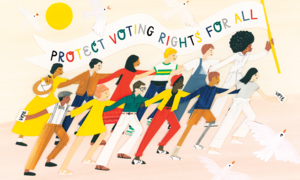lesson
Jim Crow as a Form of Racialized Social Control
How did Jim Crow function as a mechanism of racialized social control? Throughout its history, the United States has been structured by a racial caste system. From slavery to Jim Crow to mass incarceration, these forms of racialized social control reinvented themselves to meet the needs of the dominant social class according to the constraints of each era.
October 13, 2014


